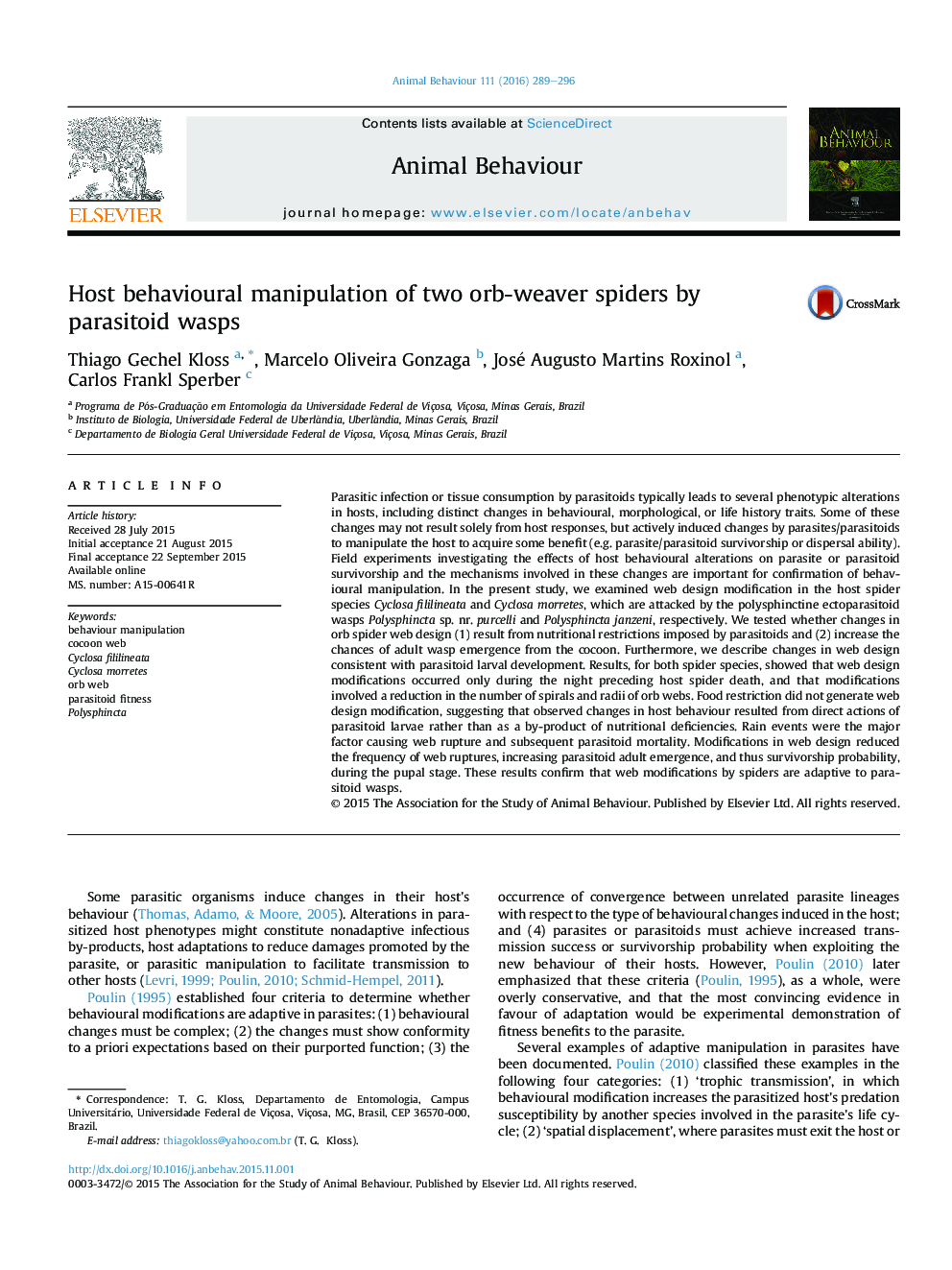| کد مقاله | کد نشریه | سال انتشار | مقاله انگلیسی | نسخه تمام متن |
|---|---|---|---|---|
| 8489440 | 1552217 | 2016 | 8 صفحه PDF | دانلود رایگان |
عنوان انگلیسی مقاله ISI
Host behavioural manipulation of two orb-weaver spiders by parasitoid wasps
ترجمه فارسی عنوان
دستکاری رفتار رفتاری دو عنکبوت جابجایی با اسپاسهای انگلی
دانلود مقاله + سفارش ترجمه
دانلود مقاله ISI انگلیسی
رایگان برای ایرانیان
کلمات کلیدی
موضوعات مرتبط
علوم زیستی و بیوفناوری
علوم کشاورزی و بیولوژیک
علوم دامی و جانورشناسی
چکیده انگلیسی
Parasitic infection or tissue consumption by parasitoids typically leads to several phenotypic alterations in hosts, including distinct changes in behavioural, morphological, or life history traits. Some of these changes may not result solely from host responses, but actively induced changes by parasites/parasitoids to manipulate the host to acquire some benefit (e.g. parasite/parasitoid survivorship or dispersal ability). Field experiments investigating the effects of host behavioural alterations on parasite or parasitoid survivorship and the mechanisms involved in these changes are important for confirmation of behavioural manipulation. In the present study, we examined web design modification in the host spider species Cyclosa fililineata and Cyclosa morretes, which are attacked by the polysphinctine ectoparasitoid wasps Polysphincta sp. nr. purcelli and Polysphincta janzeni, respectively. We tested whether changes in orb spider web design (1) result from nutritional restrictions imposed by parasitoids and (2) increase the chances of adult wasp emergence from the cocoon. Furthermore, we describe changes in web design consistent with parasitoid larval development. Results, for both spider species, showed that web design modifications occurred only during the night preceding host spider death, and that modifications involved a reduction in the number of spirals and radii of orb webs. Food restriction did not generate web design modification, suggesting that observed changes in host behaviour resulted from direct actions of parasitoid larvae rather than as a by-product of nutritional deficiencies. Rain events were the major factor causing web rupture and subsequent parasitoid mortality. Modifications in web design reduced the frequency of web ruptures, increasing parasitoid adult emergence, and thus survivorship probability, during the pupal stage. These results confirm that web modifications by spiders are adaptive to parasitoid wasps.
ناشر
Database: Elsevier - ScienceDirect (ساینس دایرکت)
Journal: Animal Behaviour - Volume 111, January 2016, Pages 289-296
Journal: Animal Behaviour - Volume 111, January 2016, Pages 289-296
نویسندگان
Thiago Gechel Kloss, Marcelo Oliveira Gonzaga, José Augusto Martins Roxinol, Carlos Frankl Sperber,
